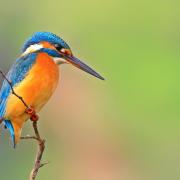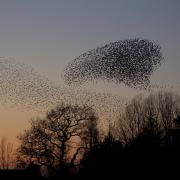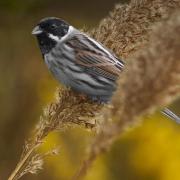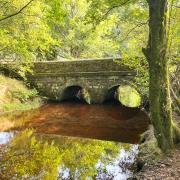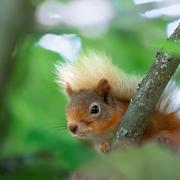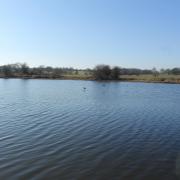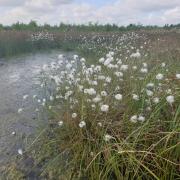Heysham Moss is home to a variety of wildlife that is enjoyed by many local people, as Alan Wright discovers

Unless you have lived in the area you would never guess that Heysham Moss is such an important area for wildlife.
As you park your car, you are surrounded by homes and driveways but cross the railway bridge and you will spot the woodland entrance to the reserve. Here, you will hear bird song and you will start to realise this is a wild place.
Skirting a boggy area and wandering through the wood, it suddenly opens out into a wide open area, with a mosaic of habitats - scrub, wet grassland and raised bog. It is the second best example of a cut-over raised bog in all of Lancashire, second only to our Winmarleigh Moss nature reserve.
Unlike Winmarleigh, which is a wilderness and difficult to find among farmers' fields, Heysham Moss is fairly easy to access. I remember five years ago when we invited schoolchildren to help us release large heath butterflies, which had been extinct there for more than 50 years. And those beautiful butterflies are still on the moss, and hopefully the children will have continued to visit, too.

Recently we have asked members of the community to get involved in hedge and wild flower plug planting. The Wet Grassland Project aims to enhance the numbers of flower species on the wet grassland which helps the raised bog next door, a 'Site of Special Scientific Interest'.
Funded by green energy company Ørsted through their Walney Extension Community Fund, it is helping to control water levels and allow much better access for people who want to walk on the moss.
North Lancashire reserves officer Reuben Neville said: 'Developments locally have isolated the reserve which is now surrounded on three sides. With breeding waders or wintering wildfowl unlikely to ever return to the areas of wet grassland, our management priorities have switched to enhancing the botanical diversity.
'A number of uncommon species, like sneezewort, greater birds-foot trefoil, skullcap and greater burnet are still present although these are now restricted and the area has become dominated by soft rush. We need to put in the correct management regimes to stop the growth of less desirable species and benefit biodiversity on the reserve.'
All this adds to the colour at a reserve where the sights and sounds are dominated by wildlife, whether its sedge warblers chattering in the reeds, rare butterflies fluttering around the flowers or and buzzards circling.
Grasshopper warblers and reed bunting, as well as willow warbler and chiffchaff are common on Heysham Moss, and snipe and woodcock have been seen.
But it's that large heath butterfly that has been the success story, with the help of the Lancashire Environment Fund and Chester Zoo. It is a great place to take a camera and photograph these incredibly rare insects, which only live where hare's tail cottongrass and cross-leaved heath grow.
If you are keen to spot them they have browny orange wings a row of with black eyespots with a creamy yellow centre and halo. They will be flying at this time of year.
We know that local people appreciate Heysham Moss as their own area of breathing space, but this is enhanced by the flowers, birds, bees and butterflies that make this place so special.












